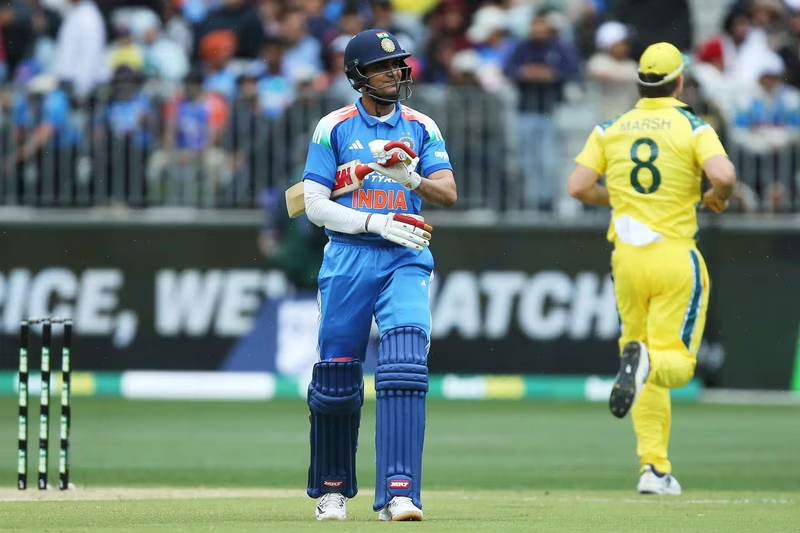Table of Contents
- Rain Interrupts India’s Innings
- How DLS Revised the Target
- Australia Cruises to Victory
- India’s Top Order Falters Again
- End of India’s ODI Winning Streak
- Sources
Rain Disrupts India’s Batting Effort in Perth
In a rain-affected first ODI at Perth’s Optus Stadium, India posted 136 for 9 in just 26 overs—a modest total that reflected both weather interruptions and batting frailties. But when Australia came out to chase, they weren’t asked to score 137. Instead, the revised DLS (Duckworth-Lewis-Stern) target was set at 131 in 26 overs.
Why the discrepancy? The answer lies in how the DLS method accounts for resources lost—not just by the team batting first, but also by the chasing side.
DLS Method: Why Australia’s Target Was Lower
The DLS system calculates targets based on “resources”—a combination of overs and wickets available. India’s innings was reduced from the scheduled 50 overs to 26 due to rain delays. However, during their innings, another rain break occurred after 22.3 overs, further disrupting momentum.
When Australia’s innings began, they too were allocated only 26 overs—but crucially, no further rain occurred during their chase. Because India had lost more “resources” (overs and batting rhythm) during multiple stoppages, the DLS algorithm adjusted Australia’s target downward to maintain fairness.
In simple terms: even though India scored 136/9, the system determined that, given the stop-start nature of their innings, a par score under stable 26-over conditions would be around 130–131.
Australia Dominates the Chase
Chasing 131, Australia never looked in trouble. Openers Travis Head and Mitch Marsh provided a solid start, and despite Head’s early dismissal, Marsh anchored the innings with an unbeaten 46 off 53 balls.
Marnus Labuschagne (37*) provided excellent support as the hosts reached 132/3 in just 21.2 overs—winning by seven wickets with nearly five overs to spare. Pat Cummins praised his team’s “clinical execution” in tough, humid conditions.
India’s Top Order Collapses Again
India’s innings never gained traction. Captain Rohit Sharma fell for 4, and Virat Kohli managed only 15 before edging behind. Shreyas Iyer top-scored with 34, but wickets fell at regular intervals. The middle order failed to build partnerships, and the tail offered little resistance.
Compounding the issue: the pitch offered early seam movement, and Australia’s bowlers—led by Josh Hazlewood (3/22)—exploited the conditions expertly. Kuldeep Yadav’s late cameo (18 off 12) was the only bright spot in an otherwise lackluster batting display.
End of India’s 8-Match ODI Winning Streak
The loss marks a significant setback for India, snapping their eight-match ODI winning streak in 2025—the longest in the calendar year. The team now faces pressure to regroup before the second ODI in Adelaide, especially with concerns mounting over top-order consistency in overseas conditions.
Coach Gautam Gambhir emphasized the need for “mental resilience” post-match. “We let the conditions dictate our game. Champions adapt,” he said.
Sources
Times of India: “1st ODI: Why Australia had to chase 131 despite India scoring 136/9”
